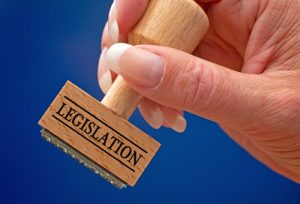
Rep. Tulsi Gabbard (D-Hawaii) introduced H.R. 897 to the House Ways and Means Committee which provides a universal basic payment to aid Americans across the country that have been impacted by COVID-19.
“The coronavirus pandemic has created a threat to the health and well-being of the American people, as well as to our country’s economic stability. While some in Washington are focused on taking care of Wall Street, everyday Americans get left behind. That’s wrong. Instead, we must act swiftly to provide a temporary universal basic payment of $1,000 per month to every American adult to help them weather the storm created by this crisis. Taking care of all Americans will stimulate our economy during this downturn,” Gabbard said. “I’ve introduced a resolution that prioritizes people so our economic relief is placed directly into the hands of every American, rather than getting stuck in bureaucracy or ending up in the pockets of big corporations.”
The resolution “urges” the federal government to provide an emergency non-taxable Universal Basic Payment of $1,000 per month to all adult Americans until COVID-19 is no longer a public health emergency.
“The Universal Basic Payment will be a temporary economic stimulus package to empower Americans directly and immediately,” a release from Gabbard states.
Both the Fed and the federal government have taken action over the week to try and give the U.S. economy a boost as it combats the spread of the coronavirus.
President Donald Trump officially announced a national emergency on Friday due to the ongoing battle with COVID-19.
Trump said the declaration will free up $50 billion in federal funding that can be used to help state and local governments.
The Fed on Sunday reduced interest rates to 0% on Sunday in an emergency measure.
The benchmark interest rate is now in a range of 0% to 0.25%, which is down from a range of 1% to 1.25%. The Fed also announced it is re-starting its "quantitative easing," as it did following the Great Recession to try and get money into the markets and the economy.
"The Committee expects to maintain this target range until it is confident that the economy has weathered recent events and is on track to achieve its maximum employment and price stability goals," said the Fed in a statement.
Officials will continue to monitor the "implications of incoming information" for economic outlook including information related to public health, global developments, and muted inflation pressures, according to the statement. The Fed added it will "use its tools and act as appropriate" to support the economy.
Falling interest rates could mean additional drops for the mortgage rates, according to CNBC.
“As was done during the QE phase of the Great Recession, the Fed purchasing MBS should help cushion some of the blow to Americans by potentially lowering their mortgage payment or giving them an incentive to buy a home,” said Dave Stevens, former CEO of the Mortgage Bankers Association and former commissioner of the FHA, to CNBC.
The Fed also announced that over the coming months that it will increase its holdings of Treasury securities by at least $500 billion and its holdings and agency mortgage-backed securities by at least $200 billion.

 DSNews The homepage of the servicing industry
DSNews The homepage of the servicing industry









